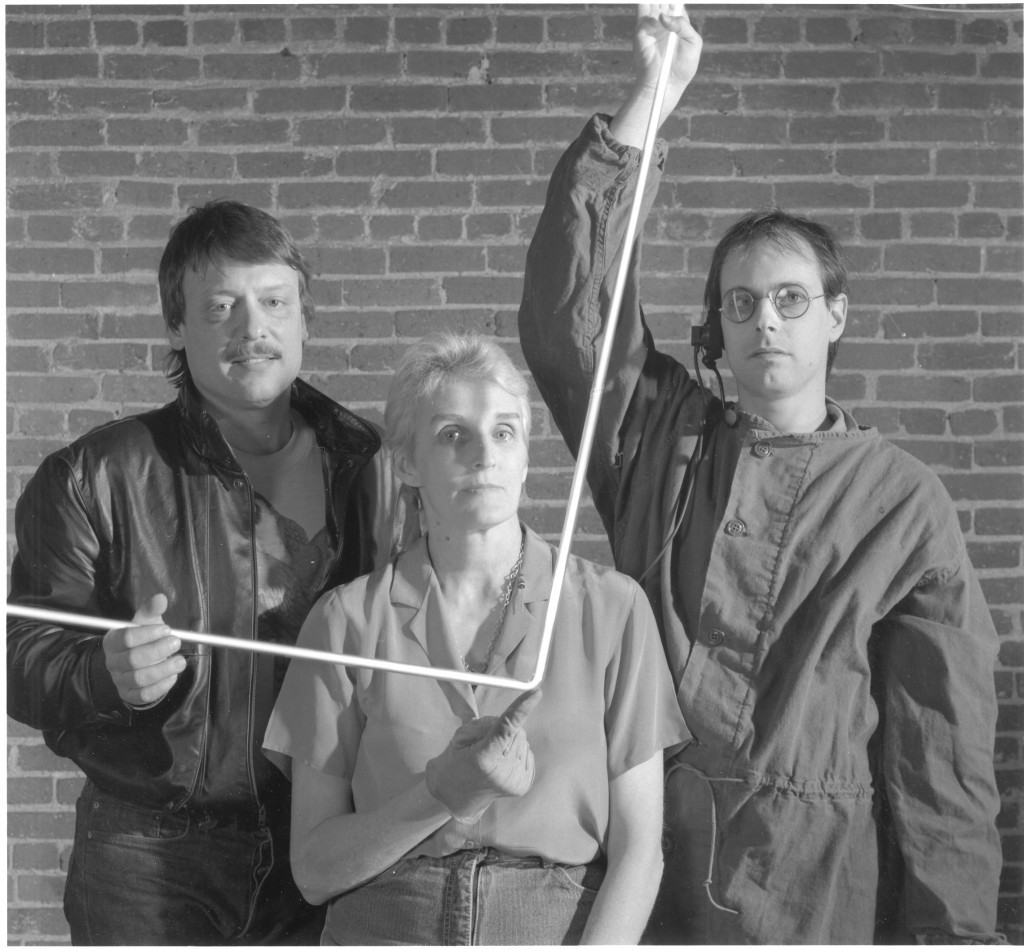Rockne Krebs
Visual Installation: Laser (duet); Laser Dance (MWDCCo)
Rockne Krebs, Laser Installation; Maida Withers, Dance; Bob Boilen, Music
The pioneering art and technology artist Rockne Krebs died in 2011 in Washington, D.C., where he had lived most of his life since the early 1960s, and in Burgess, Virginia. Krebs was widely recognized for his monumental sculptural installations with laser light, a new technology when he began to explore its potential for art in the early ‘60s. He created the vast majority of his laser works for specific outdoor locations. Some of his most important installations were on the Mall in Washington, D.C., at the Kennedy Space Center, the Philadelphia Museum of Art, the Walker Art Center in Minneapolis, and a line of laser light from Mt. Wilson in California (where the universe was discovered at the observatory in the 1920s) to the campus of the California Institute of Technology. But Krebs also worked in a variety of media, including neon (in installations on large bridges in Miami, Florida and Shreveport, Louisiana), sunlight, and camera obscura. A solar piece using glass prisms in the Omni International building in downtown Atlanta was calibrated to the changing angle of the sun so that on the equinoxes an eye (based on that of his daughter Heather) appeared on the wall of the building’s atrium. The artist also created a number of sculptures that combined prisms. One of his camera obscura installations inspired an exhibition of light, film and video environments at the Walker Art Center organized by then Director Martin Friedman. Krebs also created major public works for the Miami International Airport and for the General Services Administration in Topeka, Kansas.
One of Krebs’ early innovative installations was created for the Corcoran Gallery of Art in Washington, D.C., including a laser and sunlight piece, “Ra”, in which a fog machine made the laser light more visible. In addition to a National Endowment for the Arts Fellowship in 1970, he received a Guggenheim Foundation Fellowship in 1972 to focus on drawing, and this medium became an important creative exploration for him for the rest of his life, including his last years. A retrospective of his drawings was shown at Caltech, the Cincinnati Contemporary Art Center, and at the Corcoran Gallery of Art in the 1980s. During the 1960s and 1970s Krebs showed his work at the respected Jefferson Place Gallery in Washington, DC.
Krebs became deeply involved in artist’s issues in Washington, working with an organization that approached a number of the important museums in the city to encourage them to show more work by artists in the area. He was one of the founding board members of the Washington Project on the Arts, which was founded to provide more exhibition space for area artists.
Krebs’ initial approach to sculpture was to eliminate its materiality, and a number of his early 1960s works were geometric forms in clear Plexiglas. Laser light was his next step in creating sculptural works that had no solid form. His ground-breaking works in this medium led to his inclusion in the famous Art and Technology project and subsequent exhibition at the Los Angeles County Museum of Art. In this research period he worked with the engineers at Hewlett Packard. Later he was the first artist to create a work with digital memory that could project words or moving images in laser light. His interest in technology and science led to a lifelong friendship with Philip M. Smith, Science Advisor to President Carter and, later, Director of the National Academy of Sciences.
Krebs was born in Kansas City, Missouri, and received his B.F.A. in Sculpture from the University of Kansas. Philip M. Smith recently made a gift of a number of the artists’ finest drawings and sculptures to the Spencer Art Museum. Krebs is also represented in the Corcoran Gallery of Art collection, as well as the collections of other important art institutions. A book on his art and its key role in the rise of art and technology is being written by Jay Belloli, a curator who worked with the artist on a number of laser installations and exhibitions